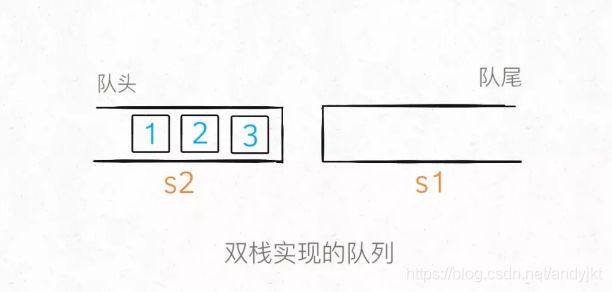- 互联网大厂Java面试指南:从基础到高阶技术栈与业务场景实战
互联网大厂Java面试指南:从基础到高阶技术栈与业务场景实战第一轮:Java基础与Spring生态问题1:请解释Java中的多线程实现方式及其适用场景。解析:核心概念:Java多线程可通过继承Thread类或实现Runnable接口实现,推荐后者以避免单继承限制。ExecutorService是更高级的线程池管理工具。适用场景:高并发任务如电商秒杀、实时数据处理。底层机制:JVM线程模型基于操作系
- 前端微服务架构详解
醉方休
架构前端微服务
前端微服务架构详解前端微服务是一种将微服务理念应用于前端开发的架构模式,它允许将大型前端应用拆分为多个独立开发、部署和运行的小型应用。一、核心概念1.什么是前端微服务独立开发:每个微应用可由不同团队独立开发独立部署:无需整体发布,单个微应用可单独部署技术异构:不同微应用可以使用不同技术栈(React、Vue、Angular等)运行时集成:在客户端动态组合成完整应用2.与传统SPA的区别特性传统SP
- 构建完整的ASP+C#和SQL Server新闻发布系统
飞翔的袋鼠弟
本文还有配套的精品资源,点击获取简介:新闻发布系统是互联网的关键应用,本文详细介绍了如何利用ASP、C#和SQLServer技术栈开发和管理新闻内容。文章涵盖了ASP用于生成动态网页、C#后端编程和SQLServer数据库管理的应用和实践,以及新闻发布流程、安全性和性能优化的要点。1.ASP动态网页生成在开发动态网站的过程中,ASP(ActiveServerPages)是一种流行的服务器端脚本环境
- 【数据结构初阶】顺序表的应用
凤年徐
数据结构c语言c++开发语言算法笔记顺序表
文章目录顺序表的应用基于动态顺序表实现通讯录前言1.定义联系人数据2.给顺序表改名3.通讯录的初始化4.通讯录的销毁5.通讯录添加数据6.通讯录删除数据7.通讯录修改数据8.通讯录查找数据9.展示通讯录数据10.通讯录的最终实现顺序表的应用基于动态顺序表实现通讯录前言功能要求1)⾄少能够存储100个⼈的通讯信息2)能够保存⽤⼾信息:名字、性别、年龄、电话、地址等3)增加联系⼈信息4)删除指定联系⼈
- 算法题目记录
iamwiam
java
数据空间研究院-后端试题题目一:线程安全的链表描述:实现题目二:自定义注解与反射描述:实现题目三:简化的消息队列描述实现题目一:线程安全的链表描述:实现一个线程安全的链表类ThreadSafeLinkedList,支持以下操作:add(Telement)-在链表末尾添加元素。remove(Telement)-移除链表中的指定元素。contains(Telement)-检查链表中是否包含指定元素。要
- 关于 栈帧变化完整流程图(函数嵌套)
shenyan~
流程图
一、什么是栈帧(StackFrame)当一个函数被调用时,会在栈上开辟一段空间,叫做栈帧。每个栈帧保存了:函数的参数返回地址(从哪里跳回来)上一个栈帧的栈底指针(保存调用者的EBP/FP)局部变量保存的一些寄存器(可选)二、函数嵌套调用例子以C为例:voidC(){intc=3;}voidB(){intb=2;C();}voidA(){inta=1;B();}intmain(){A();retur
- 如何最大化YashanDB数据库的存储性能
数据库
在数据库技术领域,存储性能不仅对数据的读写速度有直接影响,同时也关系到整个系统的效率和穷尽的业务能力。数据库管理员和系统架构师常面临着性能瓶颈、I/O瓶颈等问题,并需要通过优化存储结构、合理设计索引、选择合适的部署架构等手段来提升存储性能。本文将详细解析YashanDB数据库的存储性能优化,包括存储管理、数据结构选择、并行处理等多方面的技术原理和实践要点。存储架构优化部署架构选择YashanDB支
- php协程处理报表,php 协程 yield
weixin_39857876
php协程处理报表
什么是协程理解协程之前最好要理解进程和线程,这里不过多解释,简单来说,进程是资源分配的最小单位,线程是进程中一个单一的执行流,线程共享进程资源,每个线程都有自己独立的栈空间。线程相对于进程而言更加轻量,操作系统调度进程切换的代价很大,需要保存当前进程的各种信息,PCB进程控制块。线程切换相对更加容易,线程同属于一个进程,只需要切换栈空间。多线程更能利用多核的cpu,发挥性能。协程呢,可以说是断点,
- Netty架构解析:从高性能到协议支持
lifallen
Nettyjava开发语言设计模式数据结构nio
Netty是一个异步事件驱动的网络应用程序框架,用于快速开发可维护的高性能协议服务器和客户端。主要应用场景高性能网络服务器(HTTP、WebSocket、TCP服务器)分布式系统通信(RPC框架、消息队列)协议实现(自定义协议、标准协议适配)网络代理和网关(负载均衡、API网关)核心基础(CoreFoundation)io.netty.common:提供通用的工具类、常量和基本抽象,例如Attri
- 缓存雪崩、缓存穿透、缓存预热、缓存更新、缓存降级的理解
一:缓存雪崩我们可以简单的理解为:由于原有缓存失效,新缓存未到期间(例如:我们设置缓存时采用了相同的过期时间,在同一时刻出现大面积的缓存过期),所有原本应该访问缓存的请求都去查询数据库了,而对数据库CPU和内存造成巨大压力,严重的会造成数据库宕机。从而形成一系列连锁反应,造成整个系统崩溃。解决办法:大多数系统设计者考虑用加锁(最多的解决方案)或者队列的方式保证来保证不会有大量的线程对数据库一次性进
- 量化开发(系列第3篇): C++在高性能量化交易中的核心应用与技术栈深度解析
Natsume1710
c++开发语言性能优化python
本文为《量化开发》系列第3篇参考GitHub项目:Awesome-QuantDev-Learn前言在量化交易领域,Python以其开发效率高、生态系统丰富等优势,成为策略研究、数据分析及中低频交易的首选语言。在本系列前两篇文章中,我们详细探讨了Python在量化入门与策略回测中的实践。然而,当进入对延迟要求极为严苛的高频交易(High-FrequencyTrading,HFT)领域时,Python
- 量化策略进阶:事件驱动与另类数据挖掘实战
前面的章节,我们已经详细探讨了量化系统的基础架构:从数据的获取与管理(数据层),到策略的研发与验证(回测层),再到指令的高速执行(交易执行层),以及确保资金安全的防线(风控与监控运维层),我们共同构建了一套完整的量化交易体系。今天,我们将深入探讨量化策略的更高维度:事件驱动型策略和另类数据挖掘。这不仅仅是技术栈的扩展,更是对市场洞察力和信息处理能力的全面提升,旨在帮助您的策略在传统量价数据之外,捕
- redis实现消息队列
秋恬意
redis
✅一、使用List实现消息队列的原理(经典队列模型)RedisList本质是什么?Redis的List是一个双向链表(quicklist实现),支持从两端高效地插入和弹出元素。队列模型怎么实现?你可以把List当成一个先进先出的队列:生产者使用LPUSH把消息推入队列(左边)消费者使用RPOP弹出队列(右边)如果用BRPOP,消费者会阻塞等待直到有消息可读⚙️工作机制示意图:生产者(LPUSH)-
- java毕业设计图书馆座位预约管理系统维修端源码+lw文档+mybatis+系统+mysql数据库+调试
木林网络
mybatisjava数据库
java毕业设计图书馆座位预约管理系统维修端源码+lw文档+mybatis+系统+mysql数据库+调试java毕业设计图书馆座位预约管理系统维修端源码+lw文档+mybatis+系统+mysql数据库+调试本源码技术栈:项目架构:B/S架构开发语言:Java语言开发软件:ideaeclipse前端技术:Layui、HTML、CSS、JS、JQuery等技术后端技术:JAVA运行环境:Win10、
- 游戏跳伞卡顿?CPU Stall优化全解析
你一身傲骨怎能输
游戏开发技术专栏游戏开发语言
《粒子特效导致CPUStall的优化分析》摘要文章解析了"CPUStallwaitforevent"现象,指出这是CPU因等待内存/I/O/锁等事件而暂停执行的情况。在粒子特效中,主要诱因包括:多线程同步等待、内存带宽争用、资源竞争和任务分配不均。针对性地提出了五大优化方案:减少线程同步(采用无锁队列)、优化内存访问(避免伪共享)、均衡任务分配、异步处理计算与渲染,以及使用性能分析工具定位瓶颈。通
- 【备战秋招】详解synchronized
来个offer8
备战秋招java开发语言synchronized秋招后端
底层原理synchronized是jvm层面的内置锁,又被成为监视器锁。使用synchronized之后,会在编译之后在同步的代码块前后加上monitorenter和monitorexit字节码指令,依赖操作系统底层互斥锁实现。执行monitorenter指令时会尝试获取对象锁,如果对象没有被锁定或者已经获得了锁,锁的计数器+1。此时其他竞争锁的线程则会进入等待队列中。执行monitorexit指
- 数据结构 ---- 静态链表
作为数据结构的一大难点,静态链表也为我们更好的理解数据结构这门课做了铺垫。记得老师告诉我们,数据结构是操作系统的核心,那静态链表也为我们理解操作系统等方面的工程起了很好的铺垫作用。对于静态链表,我个人的主观感受就是,比双链表要难许多,毕竟是涉及到数据更加基本的存储,静态链表其实更能反映其本质,也更能体现出C语言本身的魅力。与此同时,静态链表带给我的直观感受是,它其实对于我们程序员来说,具有更强的自
- Redis 性能优化 18招
ThinkerFuther
redisredis性能优化数据库
前言Redis在我们的日常开发工作中,使用频率非常高,已经变成了必不可少的技术之一。Redis的使用场景也很多。比如:保存用户登录态,做限流,做分布式锁,做缓存提升数据访问速度等等。那么问题来了,Redis的性能要如何优化?为了提升Redis的性能,这篇文章跟大家一起聊聊Redis性能优化的18招,希望对你会有所帮助。1.选择合适的数据结构Redis支持多种数据结构,如字符串、哈希、列表、集合和有
- 区块链技术核心组件及应用架构的全面解析
区块链技术是一套融合密码学、分布式系统与经济激励的复合型技术体系,以下是其核心组件及应用架构的全面解析:一、区块链核心技术栈1.分布式账本技术(DLT)核心原理:多节点共同维护不可篡改的数据链数据结构:哈希指针哈希指针区块N区块N+1区块N+2关键创新:默克尔树(MerkleTree)实现高效数据验证2.密码学保障技术算法示例应用场景非对称加密ECC/secp256k1,RSA数字签名(设备身份认
- 什么是深度学习框架中的计算图?
杰瑞学AI
ComputerknowledgeNLP/LLMsAI/AGI深度学习人工智能pytorch
在深度学习框架中,计算图是核心的数据结构和抽象概念,它用来表示和定义深度学习模型的计算过程。我们可以把它想象成一个描述数学运算如何组合和执行的有向图。以下是计算图的关键要素和作用:节点:代表操作或变量。操作:数学运算,如加法(+)、乘法(*)、矩阵乘法(matmul)、激活函数(ReLU,sigmoid)、卷积(conv2d)、损失函数(cross_entropy)等。变量:通常是张量,即存储数据
- 【123揭秘】Elasticsearch内部数据结构大起底:行存、列存与倒排索引,你选对了吗?
墨瑾轩
Java乐园elasticsearch数据结构jenkins
关注墨瑾轩,带你探索编程的奥秘!超萌技术攻略,轻松晋级编程高手技术宝库已备好,就等你来挖掘订阅墨瑾轩,智趣学习不孤单即刻启航,编程之旅更有趣第一部分:理解基本概念——构建知识的基础首先,我们需要了解一些基础概念,这对于理解Elasticsearch如何处理和存储数据至关重要。1.1行存储vs列存储行存储:适用于频繁写入和读取整行数据的场景。例如,在关系型数据库中,每一行代表一条记录,所有列的数据都
- C语言数据结构与算法专栏目录
CodeAllen嵌入式
嵌入式C语言数据结构算法
后序会开一个《嵌入式数据结构专栏》主要为了学习嵌入式的同学,软件能力提升和大厂面试能力,感谢大家关注!直达专栏:https://blog.csdn.net/super828/category_11083370.html《C语言数据结构与算法》专栏已经更新完毕,共计72篇分享,后期会逐渐修改错误并添加内容0数据之间的关系有哪些?1如何度量一个算法的好坏?2常见的时间复杂度实例
- 如何在YashanDB数据库中实现数据模型的简化
数据库
在现代数据库技术领域,数据模型的复杂性经常导致性能瓶颈和维护困惑。随着数据规模的增长和业务诉求的增加,复杂的数据结构、冗余的存储和不必要的关联关系都会影响整体数据库的性能和可维护性。特别是在面对动态变化的业务需求时,灵活性和扩展性成为关键因素。YashanDB提供了一系列功能强大的工具和机制,能够有效简化数据模型,提升数据库性能,并增强数据操作的灵活性。本文章旨在为数据库开发者和架构师提供技术洞见
- ssm高校奖助学金管理系统设计实现
以下是关于SSM高校奖助学金管理系统的技术栈、功能设计、数据库设计及测试设计的详细说明:技术栈后端框架:Spring+SpringMVC+MyBatis(SSM组合),提供IoC、AOP、事务管理和ORM支持。前端技术:Thymeleaf/JSP+Bootstrap+jQuery,实现动态页面和响应式布局。数据库:MySQL8.0,支持事务和高并发访问。安全框架:SpringSecurity,用于
- 算法分析与设计实验2:实现克鲁斯卡尔算法和prim算法
表白墙上别挂我
算法笔记经验分享
实验原理(一)克鲁斯卡尔算法:一种用于求解最小生成树问题的贪心算法,该算法的基本思想是按照边的权重从小到大排序,然后依次选择边,并加入生成树中,同时确保不会形成环路,直到生成树包含图中所有的顶点为止。具体步骤:边的排序:将所有边按照权重从小到大排序。初始化:创建一个空的生成树(可以是一个空的图结构),以及一个用于记录每个顶点所属集合(或称为连通分量)的数据结构(例如并查集)。边的选择:依次选择排序
- 2025年渗透测试面试题总结-2025年HW(护网面试) 31(题目+回答)
独行soc
2025年护网面试职场和发展安全linux护网渗透测试
安全领域各种资源,学习文档,以及工具分享、前沿信息分享、POC、EXP分享。不定期分享各种好玩的项目及好用的工具,欢迎关注。目录2025年HW(护网面试)311.自我介绍2.渗透测试流程(五阶段模型)3.技术栈与开发经历4.自动化挖洞实践5.信息搜集方法论6.深度漏洞挖掘案例8.SQL注入实战技巧9.AWVS扫描与防御10.CSRFvsSSRF核心差异11.SSRF正则绕过技术12.虚拟主机识别原
- QA - RAG智能问答系统中的文档切片与实现原理
ai开发
引言在现代企业知识管理系统中,智能问答系统正发挥着越来越重要的作用。GC-QA-RAG系统作为葡萄城技术栈中的重要组成部分,其核心功能是通过对文档内容进行智能切片和向量化存储,实现对技术文档的高效检索和问答。本文将深入剖析该系统的文档切片原理,包括短文档和长文档的不同处理策略,以及如何将这些技术应用于实际场景中。正文1.原始方案及其局限性最初的GC-QA-RAG系统采用了一种直观的方法:将整个文档
- R 列表:深入解析与高效应用
沐知全栈开发
开发语言
R列表:深入解析与高效应用引言在R语言中,列表(List)是一种非常重要的数据结构,它允许我们将不同类型的数据组合在一起。列表在数据分析和统计建模中扮演着至关重要的角色。本文将深入探讨R列表的概念、创建方法、操作技巧以及在实际应用中的高效使用。R列表概述定义R列表是一种可以包含多种数据类型的数据结构,如数值、字符、逻辑值、其他列表等。列表可以看作是一个容器,可以存储任意数量的元素。类型R列表分为两
- ARM SMMUv3故障和错误(五)
业余程序员plus
ARMv8-A架构SMMUFaultsErrorsSMMU_GERRORCMDQ_ERRFaultmodelsStallmodel
1.概述SMMU有三种方式将故障和错误(FaultsandErrors)报告给软件,具体如下:提交给SMMU命令在某些情况下不正确时,命令队列有机制报告这些错误。事件队列中记录了一些错误和故障。包括了来自设备流量(traffic)引起的错误和故障,比如配置错误或者设备地址引起的缺页异常。一种基于全局寄存器的SMMU_GERROR机制用于上报以下情况引发的事件:当无法将记录写入事件队列或PRI队列时
- 浅析Nordic nRF5 SDK例程架构(三)
Real你老王
单片机c#
浅析NordicnRF5SDK例程架构第一章前言及bsp例程浅析第二章ble_app_uart例程浅析第三章添加电池电量服务(BAS)第四章如何使用的修改协议栈(以SESIDE为例)文章目录浅析NordicnRF5SDK例程架构一、需要的头文件二、定义电池的电量服务实例三、服务初始化四、sdk_config.h文件配置五、修改效果六、可能出现的Debug汇总本文紧接上篇,将主要介绍如何在nRF5_
- iOS http封装
374016526
ios服务器交互http网络请求
程序开发避免不了与服务器的交互,这里打包了一个自己写的http交互库。希望可以帮到大家。
内置一个basehttp,当我们创建自己的service可以继承实现。
KuroAppBaseHttp *baseHttp = [[KuroAppBaseHttp alloc] init];
[baseHttp setDelegate:self];
[baseHttp
- lolcat :一个在 Linux 终端中输出彩虹特效的命令行工具
brotherlamp
linuxlinux教程linux视频linux自学linux资料
那些相信 Linux 命令行是单调无聊且没有任何乐趣的人们,你们错了,这里有一些有关 Linux 的文章,它们展示着 Linux 是如何的有趣和“淘气” 。
在本文中,我将讨论一个名为“lolcat”的小工具 – 它可以在终端中生成彩虹般的颜色。
何为 lolcat ?
Lolcat 是一个针对 Linux,BSD 和 OSX 平台的工具,它类似于 cat 命令,并为 cat
- MongoDB索引管理(1)——[九]
eksliang
mongodbMongoDB管理索引
转载请出自出处:http://eksliang.iteye.com/blog/2178427 一、概述
数据库的索引与书籍的索引类似,有了索引就不需要翻转整本书。数据库的索引跟这个原理一样,首先在索引中找,在索引中找到条目以后,就可以直接跳转到目标文档的位置,从而使查询速度提高几个数据量级。
不使用索引的查询称
- Informatica参数及变量
18289753290
Informatica参数变量
下面是本人通俗的理解,如有不对之处,希望指正 info参数的设置:在info中用到的参数都在server的专门的配置文件中(最好以parma)结尾 下面的GLOBAl就是全局的,$开头的是系统级变量,$$开头的变量是自定义变量。如果是在session中或者mapping中用到的变量就是局部变量,那就把global换成对应的session或者mapping名字。
[GLOBAL] $Par
- python 解析unicode字符串为utf8编码字符串
酷的飞上天空
unicode
php返回的json字符串如果包含中文,则会被转换成\uxx格式的unicode编码字符串返回。
在浏览器中能正常识别这种编码,但是后台程序却不能识别,直接输出显示的是\uxx的字符,并未进行转码。
转换方式如下
>>> import json
>>> q = '{"text":"\u4
- Hibernate的总结
永夜-极光
Hibernate
1.hibernate的作用,简化对数据库的编码,使开发人员不必再与复杂的sql语句打交道
做项目大部分都需要用JAVA来链接数据库,比如你要做一个会员注册的 页面,那么 获取到用户填写的 基本信后,你要把这些基本信息存入数据库对应的表中,不用hibernate还有mybatis之类的框架,都不用的话就得用JDBC,也就是JAVA自己的,用这个东西你要写很多的代码,比如保存注册信
- SyntaxError: Non-UTF-8 code starting with '\xc4'
随便小屋
python
刚开始看一下Python语言,传说听强大的,但我感觉还是没Java强吧!
写Hello World的时候就遇到一个问题,在Eclipse中写的,代码如下
'''
Created on 2014年10月27日
@author: Logic
'''
print("Hello World!");
运行结果
SyntaxError: Non-UTF-8
- 学会敬酒礼仪 不做酒席菜鸟
aijuans
菜鸟
俗话说,酒是越喝越厚,但在酒桌上也有很多学问讲究,以下总结了一些酒桌上的你不得不注意的小细节。
细节一:领导相互喝完才轮到自己敬酒。敬酒一定要站起来,双手举杯。
细节二:可以多人敬一人,决不可一人敬多人,除非你是领导。
细节三:自己敬别人,如果不碰杯,自己喝多少可视乎情况而定,比如对方酒量,对方喝酒态度,切不可比对方喝得少,要知道是自己敬人。
细节四:自己敬别人,如果碰杯,一
- 《创新者的基因》读书笔记
aoyouzi
读书笔记《创新者的基因》
创新者的基因
创新者的“基因”,即最具创意的企业家具备的五种“发现技能”:联想,观察,实验,发问,建立人脉。
第一部分破坏性创新,从你开始
第一章破坏性创新者的基因
如何获得启示:
发现以下的因素起到了催化剂的作用:(1) -个挑战现状的问题;(2)对某项技术、某个公司或顾客的观察;(3) -次尝试新鲜事物的经验或实验;(4)与某人进行了一次交谈,为他点醒
- 表单验证技术
百合不是茶
JavaScriptDOM对象String对象事件
js最主要的功能就是验证表单,下面是我对表单验证的一些理解,贴出来与大家交流交流 ,数显我们要知道表单验证需要的技术点, String对象,事件,函数
一:String对象;通常是对字符串的操作;
1,String的属性;
字符串.length;表示该字符串的长度;
var str= "java"
- web.xml配置详解之context-param
bijian1013
javaservletweb.xmlcontext-param
一.格式定义:
<context-param>
<param-name>contextConfigLocation</param-name>
<param-value>contextConfigLocationValue></param-value>
</context-param>
作用:该元
- Web系统常见编码漏洞(开发工程师知晓)
Bill_chen
sqlPHPWebfckeditor脚本
1.头号大敌:SQL Injection
原因:程序中对用户输入检查不严格,用户可以提交一段数据库查询代码,根据程序返回的结果,
获得某些他想得知的数据,这就是所谓的SQL Injection,即SQL注入。
本质:
对于输入检查不充分,导致SQL语句将用户提交的非法数据当作语句的一部分来执行。
示例:
String query = "SELECT id FROM users
- 【MongoDB学习笔记六】MongoDB修改器
bit1129
mongodb
本文首先介绍下MongoDB的基本的增删改查操作,然后,详细介绍MongoDB提供的修改器,以完成各种各样的文档更新操作 MongoDB的主要操作
show dbs 显示当前用户能看到哪些数据库
use foobar 将数据库切换到foobar
show collections 显示当前数据库有哪些集合
db.people.update,update不带参数,可
- 提高职业素养,做好人生规划
白糖_
人生
培训讲师是成都著名的企业培训讲师,他在讲课中提出的一些观点很新颖,在此我收录了一些分享一下。注:讲师的观点不代表本人的观点,这些东西大家自己揣摩。
1、什么是职业规划:职业规划并不完全代表你到什么阶段要当什么官要拿多少钱,这些都只是梦想。职业规划是清楚的认识自己现在缺什么,这个阶段该学习什么,下个阶段缺什么,又应该怎么去规划学习,这样才算是规划。
- 国外的网站你都到哪边看?
bozch
技术网站国外
学习软件开发技术,如果没有什么英文基础,最好还是看国内的一些技术网站,例如:开源OSchina,csdn,iteye,51cto等等。
个人感觉如果英语基础能力不错的话,可以浏览国外的网站来进行软件技术基础的学习,例如java开发中常用的到的网站有apache.org 里面有apache的很多Projects,springframework.org是spring相关的项目网站,还有几个感觉不错的
- 编程之美-光影切割问题
bylijinnan
编程之美
package a;
public class DisorderCount {
/**《编程之美》“光影切割问题”
* 主要是两个问题:
* 1.数学公式(设定没有三条以上的直线交于同一点):
* 两条直线最多一个交点,将平面分成了4个区域;
* 三条直线最多三个交点,将平面分成了7个区域;
* 可以推出:N条直线 M个交点,区域数为N+M+1。
- 关于Web跨站执行脚本概念
chenbowen00
Web安全跨站执行脚本
跨站脚本攻击(XSS)是web应用程序中最危险和最常见的安全漏洞之一。安全研究人员发现这个漏洞在最受欢迎的网站,包括谷歌、Facebook、亚马逊、PayPal,和许多其他网站。如果你看看bug赏金计划,大多数报告的问题属于 XSS。为了防止跨站脚本攻击,浏览器也有自己的过滤器,但安全研究人员总是想方设法绕过这些过滤器。这个漏洞是通常用于执行cookie窃取、恶意软件传播,会话劫持,恶意重定向。在
- [开源项目与投资]投资开源项目之前需要统计该项目已有的用户数
comsci
开源项目
现在国内和国外,特别是美国那边,突然出现很多开源项目,但是这些项目的用户有多少,有多少忠诚的粉丝,对于投资者来讲,完全是一个未知数,那么要投资开源项目,我们投资者必须准确无误的知道该项目的全部情况,包括项目发起人的情况,项目的维持时间..项目的技术水平,项目的参与者的势力,项目投入产出的效益.....
- oracle alert log file(告警日志文件)
daizj
oracle告警日志文件alert log file
The alert log is a chronological log of messages and errors, and includes the following items:
All internal errors (ORA-00600), block corruption errors (ORA-01578), and deadlock errors (ORA-00060)
- 关于 CAS SSO 文章声明
denger
SSO
由于几年前写了几篇 CAS 系列的文章,之后陆续有人参照文章去实现,可都遇到了各种问题,同时经常或多或少的收到不少人的求助。现在这时特此说明几点:
1. 那些文章发表于好几年前了,CAS 已经更新几个很多版本了,由于近年已经没有做该领域方面的事情,所有文章也没有持续更新。
2. 文章只是提供思路,尽管 CAS 版本已经发生变化,但原理和流程仍然一致。最重要的是明白原理,然后
- 初二上学期难记单词
dcj3sjt126com
englishword
lesson 课
traffic 交通
matter 要紧;事物
happy 快乐的,幸福的
second 第二的
idea 主意;想法;意见
mean 意味着
important 重要的,重大的
never 从来,决不
afraid 害怕 的
fifth 第五的
hometown 故乡,家乡
discuss 讨论;议论
east 东方的
agree 同意;赞成
bo
- uicollectionview 纯代码布局, 添加头部视图
dcj3sjt126com
Collection
#import <UIKit/UIKit.h>
@interface myHeadView : UICollectionReusableView
{
UILabel *TitleLable;
}
-(void)setTextTitle;
@end
#import "myHeadView.h"
@implementation m
- N 位随机数字串的 JAVA 生成实现
FX夜归人
javaMath随机数Random
/**
* 功能描述 随机数工具类<br />
* @author FengXueYeGuiRen
* 创建时间 2014-7-25<br />
*/
public class RandomUtil {
// 随机数生成器
private static java.util.Random random = new java.util.R
- Ehcache(09)——缓存Web页面
234390216
ehcache页面缓存
页面缓存
目录
1 SimplePageCachingFilter
1.1 calculateKey
1.2 可配置的初始化参数
1.2.1 cach
- spring中少用的注解@primary解析
jackyrong
primary
这次看下spring中少见的注解@primary注解,例子
@Component
public class MetalSinger implements Singer{
@Override
public String sing(String lyrics) {
return "I am singing with DIO voice
- Java几款性能分析工具的对比
lbwahoo
java
Java几款性能分析工具的对比
摘自:http://my.oschina.net/liux/blog/51800
在给客户的应用程序维护的过程中,我注意到在高负载下的一些性能问题。理论上,增加对应用程序的负载会使性能等比率的下降。然而,我认为性能下降的比率远远高于负载的增加。我也发现,性能可以通过改变应用程序的逻辑来提升,甚至达到极限。为了更详细的了解这一点,我们需要做一些性能
- JVM参数配置大全
nickys
jvm应用服务器
JVM参数配置大全
/usr/local/jdk/bin/java -Dresin.home=/usr/local/resin -server -Xms1800M -Xmx1800M -Xmn300M -Xss512K -XX:PermSize=300M -XX:MaxPermSize=300M -XX:SurvivorRatio=8 -XX:MaxTenuringThreshold=5 -
- 搭建 CentOS 6 服务器(14) - squid、Varnish
rensanning
varnish
(一)squid
安装
# yum install httpd-tools -y
# htpasswd -c -b /etc/squid/passwords squiduser 123456
# yum install squid -y
设置
# cp /etc/squid/squid.conf /etc/squid/squid.conf.bak
# vi /etc/
- Spring缓存注解@Cache使用
tom_seed
spring
参考资料
http://www.ibm.com/developerworks/cn/opensource/os-cn-spring-cache/
http://swiftlet.net/archives/774
缓存注解有以下三个:
@Cacheable @CacheEvict @CachePut
- dom4j解析XML时出现"java.lang.noclassdeffounderror: org/jaxen/jaxenexception"错误
xp9802
java.lang.NoClassDefFoundError: org/jaxen/JaxenExc
关键字: java.lang.noclassdeffounderror: org/jaxen/jaxenexception
使用dom4j解析XML时,要快速获取某个节点的数据,使用XPath是个不错的方法,dom4j的快速手册里也建议使用这种方式
执行时却抛出以下异常:
Exceptio
